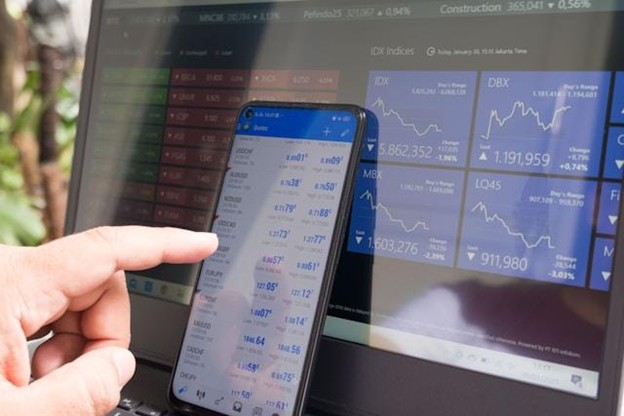Just when you thought it was a calm Wednesday (July 16) on Wall Street, a political bombshell sent markets into a frenzy, and then they bounced right back.
A midday report from Bloomberg claimed that President Trump might fire Federal Reserve Chair Jerome Powell. That rumor alone sent stocks sliding, the U.S. dollar tumbling, and Treasury yields popping, all within 30 chaotic minutes.
But by the closing bell? Markets had brushed it off. The Nasdaq closed at yet another record high, while the Dow and S&P 500 finished firmly in the green.
Dylan Bell, chief investment officer at CalBay Investments, summed it up perfectly: “The Fed’s independence is hugely important to our overall economy, so you saw the market react when that initial headline came out.” And react it did, but only temporarily.
By the end of the session, Wall Street had more than recovered. The Nasdaq Composite climbed 0.26% to close at 20,730.49, its fifth record high in the last six sessions.
The Dow Jones rose 0.53%, and the S&P 500 gained 0.32%, continuing the broader market’s recent surge. That bounce-back in the face of serious political noise says a lot about investor sentiment right now.
The CBOE Volatility Index (VIX), often called Wall Street’s fear gauge, spiked to a three-week high immediately after the Powell rumor. But just as quickly, it eased back once the situation settled. These kinds of intraday reversals show how on edge the market is in 2025.
Between tariffs, inflation drama, AI stock booms, and geopolitical crosswinds, even brief political whispers can jolt investors into panic mode.
At the heart of all this is a brewing tension between Trump’s economic agenda and the Federal Reserve’s more cautious stance.
Trump wants rate cuts, and he wants them now. But the Fed has been holding the line, saying it needs more clarity, especially on how Trump’s tariff policies might affect inflation. This week’s data gave both sides something to chew on.
Wednesday’s Producer Price Index (PPI) showed prices flatlining in June, hinting at cooling inflation. But a day earlier, the Consumer Price Index (CPI) came in hotter than expected, throwing cold water on hopes for deep rate cuts.
And those tariffs are a wildcard. As Fed officials like Raphael Bostic have pointed out, rising import taxes could very well reignite inflation pressures, which is the last thing the Fed wants while managing interest rates.
And let’s not forget, this all happened on the second day of earnings season. Several major banks reported stronger profits, but the reaction was lukewarm at best. Goldman Sachs stock rose modestly after a 22% earnings jump, but Bank of America and Morgan Stanley actually slipped despite beating expectations. The market’s message is that macro matters more right now.
Johnson & Johnson was one of the standout performers of the day, surging 6.2% after revising its tariff-related cost projections downward and boosting its full-year sales and profit outlook. It was the second-best performer on the S&P 500.
Meanwhile, tech stocks, particularly semiconductors, cooled off a bit. The semiconductor index slipped 0.4%, pulling back after a strong run fueled by Nvidia’s news that it would be allowed to sell H2O chips in China. That bump had already played out, and now semis are taking a breather.
So, if nothing else, today reminded us that the market hates surprises, especially political ones that threaten the independence of the Fed. Whether or not Trump can or will fire Powell is still a legal gray area, but just the suggestion of it is enough to shake global markets. That uncertainty alone is enough to spook investors, regardless of the actual outcome.
Despite the drama, the economic fundamentals remain strong, and that’s why markets recovered so quickly. Inflation remains the central puzzle, and traders are recalibrating expectations about when (or if) the Fed will cut rates. It’s a complicated game of signals, reactions, and rhetoric.
But for now, investors are doing what they do best: adjusting, adapting, and buying the dip. In this kind of market, it pays to be nimble, and those who can best read the Fed tea leaves will likely come out ahead.



